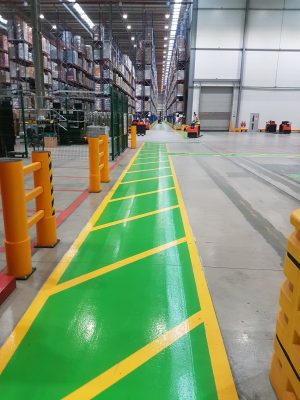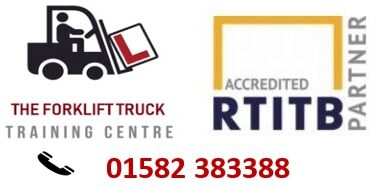
A Beginners Guide to Forklift Trucks – Preparation and Operation.
Welcome to a brand-new series here on WeTrainFLT, that we’re appropriately naming ‘A Beginners Guide to’. Here, we will give you the lowdown on everything you need to know about the chosen topic.
We start with something we know an awful lot about – forklifts. More specifically, preparing the forklift for use, and how to operate a forklift in a safe and proper way.
As time goes on, we will create more blogs covering other areas of forklift use to ensure all you readers have the best possible source for forklift information. But, for now, let’s move on to our first point for forklift preparation and operation.
Preparations.
In this part of our guide, we’ll be covering the areas an operator must prepare before operating the forklift.
Forklift License.
Believe it or not, there is no such thing as a physical forklift license. But there is training and certification to operate a forklift safely and effectively. Rather than a license, it’s a certification saying you’re qualified to operative a forklift, but it’s often still referred to as a ‘forklift license’.
So, if you’re applying for a position that requests a ‘forklift license’ as a requirement, don’t fret. If you’ve got an active qualification to operate a forklift, this is what they’re looking for.
For help in acquiring your forklift ‘license’ aka certification, click here.
Checking the Forklift.
Like with any piece of heavy equipment, you should perform pre-operation checks before using the machinery. A forklift is no different. How to do this will be covered in your forklift training, and there are various online guides and videos if you’re in need of a refresher. However, the main checks include:
- Water, oil, and hydraulic fluid levels.
- Tire pressure and conditioning.
- Fork condition.
- Safety measures.
- General wear & tear to the vehicle.
But these will vary depending on the model of forklift you will be using. So, ensure you’re performing the right checks for the appropriate model of forklift.
It’s easy to get into the bad habit of not performing these, but this is something you’ll want to avoid. After all, you wouldn’t want to fly in a plane or sail on a boat without someone checking it before use. Different businesses and employers will require pre-operation checks to be performed at different times, some being once a day, some being before every use. It’s important to check these if you work in an environment that uses forklift trucks.
Starting Up the Forklift.
Once you have mounted and started up the forklift you’re operating, it’s time for the operational inspections. Once again, these will be taught to you during your training or refresher courses, but the main inspections include:
- Checking for any obstacles in your path.
- Allowing yourself clear visibility (keeping a clear line of sight in the direction you’re travelling).
- Ensuring headlights are turned on if the lighting is low.
- Ensuring any spotters you’re using are ready to help.
Please note that these are not the only inspections needed before operating the forklift. Inspections will vary from model to model.
If you’re looking for refresher courses for your forklift certification, click here.
Operating the Forklift.
In this part of our guide, we’ll be covering the areas an operator must be aware of and check for whilst operating the forklift.
Visibility.
Operating a forklift is not like driving a car, and there is a common misconception that using a forklift is easy and relatively risk-free. However, when operating a forklift, there are many aspects you will have to consider that you may not have thought of.
Forklifts are often used in warehouse spaces which can have limited visibility. From tight spaces to low lighting, these all present a risk to not only the operator but to other workers sharing the space.
Ensure all precautions are made to limit the chances of an accident whilst operating a forklift. These include making sure all surrounding workers know a forklift is in operation, and ensuring all possible collisions are avoided.
As mentioned previously, visibility can be enhanced by the use of headlights in low-lit areas. Spotters can be used for improved visibility, and travelling at low speeds are all recommended to help improve visibility.
Speed.
Speaking of speed limits, hen operating a forklift, you must ensure you adhere to any speed limits in place. Not only will this limit the likelihood of an accident, but it will also ensure there is no damage or strain to the machine.
It can be tempting to drive at slightly higher speeds to ensure the job is done faster. But ask yourself if it’s worth the risk of causing an accident, potentially causing damage to goods, the vehicle, yourself, and others. We don’t think so.
For more information on the speed limits in place, speak to your site manager for the speed limit in operation in your workplace. With regards to the maximum speed a forklift can operate at, consult the appropriate model guide, either physical or online.
Load Limits.
Load limits are often ignored when using a forklift, which is extremely dangerous to both the operator and those around you.
When using a forklift, make a note of the safe load limit for the model you’re using. This will often be printed on the vehicle itself but can also be found in the appropriate guidebook or manual.
Although it may not be specifically mentioned, load limits also include the size and width of goods you’re transporting. It should go without saying that if the goods you’re transporting hang well over the sides of the forks, you should take extra care. Consider carrying fewer goods to lower the risk of collision.
Finding the right balance of staying within the load limit of the forklift and carry enough goods to make the forklift’s work effective can be tricky. But with a bit of experience, you’ll soon become the expert.
Conclusion.
There you have it, the basics for preparing and operating a forklift.
Think we’ve missed anything? Comment below letting us know, and we’ll be sure to add it to the guide!
If you’re looking for more information on forklift training and refresher courses, click here or get in contact.
Thanks for reading.
